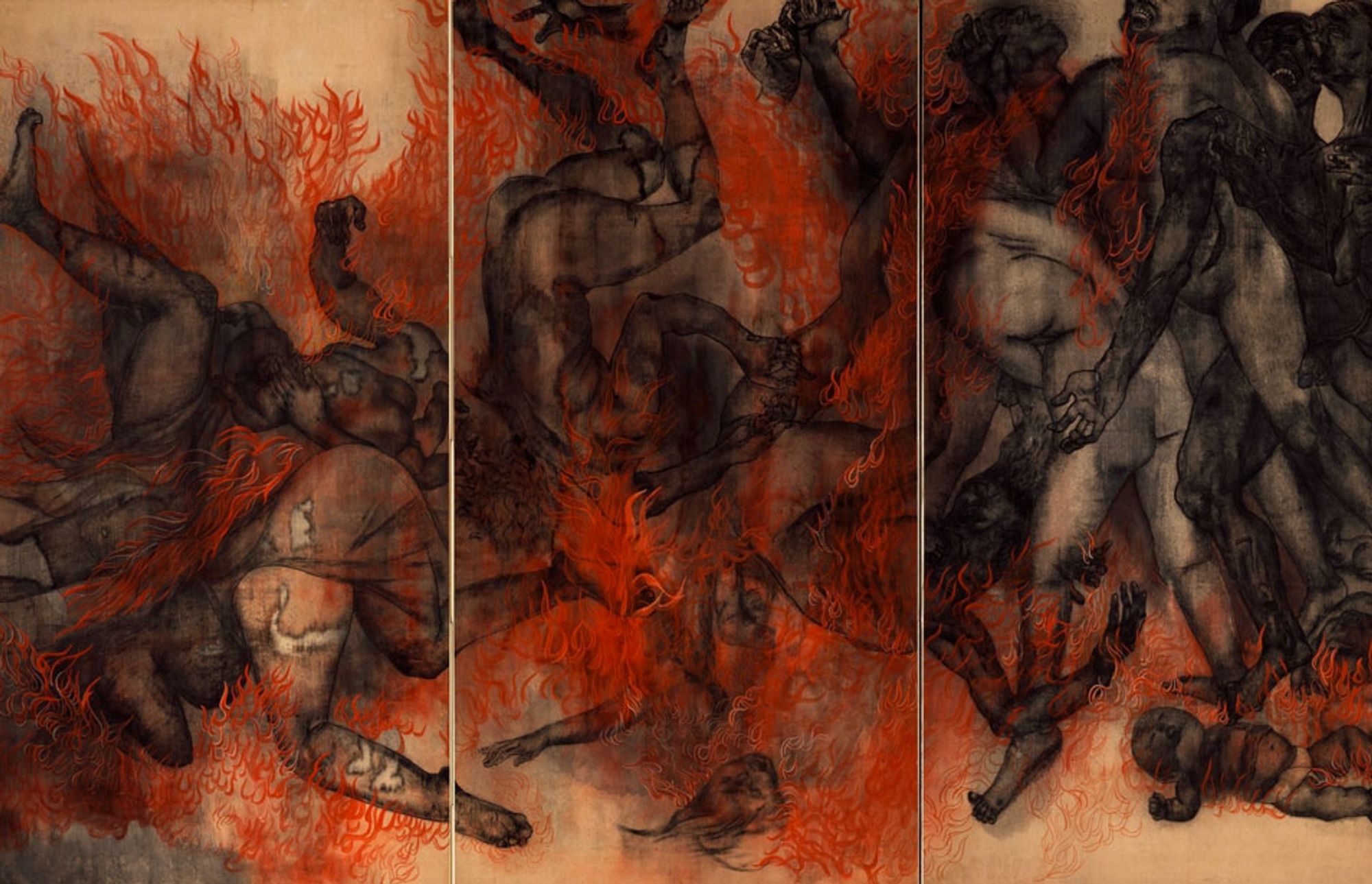
This dossier looks at how the US-led New Cold War against China is destabilising Northeast Asia, focusing on the Korean Peninsula, Taiwan Strait, and Japan.
-
Part I: The New Cold War
-
The US Pivot to Asia
-
Building an Asian NATO?
-
The North Korean Bogeyman
-
The Taiwan Hot Spot
-
The Threat of Military Escalation
-
-
Part II: The ‘Old’ Cold War Never Ended
-
The Rearmament of Japan
-
The Division of Korea
-
Taiwan, An ‘Unsinkable Aircraft Carrier’
-
-
Part III: A Path to Peace in Northeast Asia
-
Anti-Militarisation Struggles in Okinawa
-
A Peace Treaty in the Korean Peninsula
-
Peace Across the Taiwan Strait
-
A Proposal for the Peace Movement
-
Introduction
On 18 August 2023, the heads of state of the United States, Japan, and South Korea gathered for a historic summit at Camp David. At the secluded US presidential retreat in Frederick County, Maryland, the three leaders announced a new agreement for ‘trilateral security cooperation’ in Northeast Asia, aimed principally at containing the rise of China.2
Washington’s previous efforts to create such a pact were unable to overcome the frayed relations between Japan and South Korea that stem from the legacy of Japanese colonialism. But this time, to pave the way for this military bloc, South Korean President Yoon Suk Yeol excused Japan from paying reparations for its colonial and war crimes.
The US-led New Cold War against China is destabilising Northeast Asia along the region’s historic fault lines as part of a broader militarisation campaign that extends from Japan and South Korea, through the Taiwan Strait and the Philippines, all the way to Australia and the Pacific Islands. Backed by Washington, Japanese Prime Minister Fumio Kishida has accelerated his country’s rearmament, aiming to double military spending by 2027 and acquiring long-range missiles to strike enemy targets.3
Meanwhile, Korea’s peace process has been derailed as the US expands its power projection in the region. Although North Korea has often been touted as the reason for increased militarisation, this has always been a fig leaf for US containment strategies – first against the Soviet Union and today against China.
In fact, the ‘old’ Cold War never ended in Northeast Asia, its embers still burning in the Korean Peninsula and in the Taiwan Strait. Despite the collapse of the Soviet Union and the integration of China into the global economy, the US network of bilateral military alliances that was created after World War II has kept the region divided. At the same time, alongside these fault lines of conflict, countervailing movements are fighting for peace, ecological survival, and people’s well-being across Northeast Asia, from the Okinawa Islands to the buzzing metropolis of Seoul. To build a future of peace and cooperation, it is necessary to stop the US-led New Cold War and dismantle the system of bilateral alliances that have impeded justice and reconciliation in the region for over 70 years.
DOWNLOAD PDF: The New Cold War Is Sending Tremors through Northeast Asia
 The Hiroshima Panels were created by Japanese husband and wife Maruki Iri (1901–1995) and Maruki Toshi (1912–2000) over a thirty-two-year period to depict the horrors caused by the nuclear bombs that the United States government dropped on Hiroshima and Nagasaki in August 1945. During this period, they painted around 900 human figures representing some of the people killed in Hiroshima and Nagasaki (though the exact death count is unknown, it is estimated to be as high as 220,000).
The Hiroshima Panels were created by Japanese husband and wife Maruki Iri (1901–1995) and Maruki Toshi (1912–2000) over a thirty-two-year period to depict the horrors caused by the nuclear bombs that the United States government dropped on Hiroshima and Nagasaki in August 1945. During this period, they painted around 900 human figures representing some of the people killed in Hiroshima and Nagasaki (though the exact death count is unknown, it is estimated to be as high as 220,000).
Rendered in the traditional Japanese ink wash painting style known as sumi-e, this series of fifteen folded panels carries a powerful message against war and for peace – a banner that this dossier continues to carry for the region and the world.
Preparing for War is the Beginning: An Early Warning for Northeast Asia
The East on Fire: Who Benefits from a War in Northeast Asia?